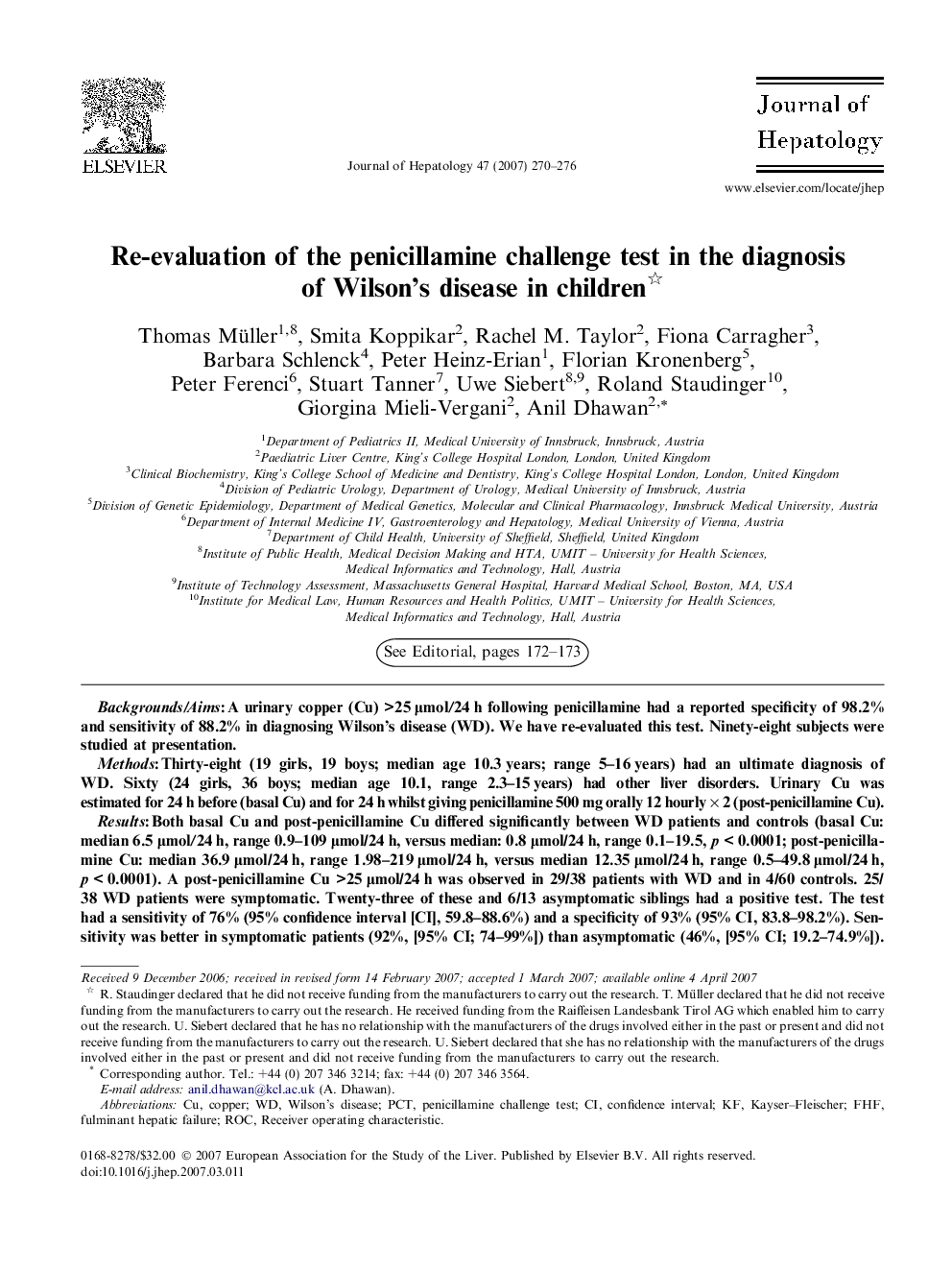| Article ID | Journal | Published Year | Pages | File Type |
|---|---|---|---|---|
| 3314658 | Journal of Hepatology | 2007 | 7 Pages |
Backgrounds/AimsA urinary copper (Cu) >25 μmol/24 h following penicillamine had a reported specificity of 98.2% and sensitivity of 88.2% in diagnosing Wilson’s disease (WD). We have re-evaluated this test. Ninety-eight subjects were studied at presentation.MethodsThirty-eight (19 girls, 19 boys; median age 10.3 years; range 5–16 years) had an ultimate diagnosis of WD. Sixty (24 girls, 36 boys; median age 10.1, range 2.3–15 years) had other liver disorders. Urinary Cu was estimated for 24 h before (basal Cu) and for 24 h whilst giving penicillamine 500 mg orally 12 hourly × 2 (post-penicillamine Cu).ResultsBoth basal Cu and post-penicillamine Cu differed significantly between WD patients and controls (basal Cu: median 6.5 μmol/24 h, range 0.9–109 μmol/24 h, versus median: 0.8 μmol/24 h, range 0.1–19.5, p < 0.0001; post-penicillamine Cu: median 36.9 μmol/24 h, range 1.98–219 μmol/24 h, versus median 12.35 μmol/24 h, range 0.5–49.8 μmol/24 h, p < 0.0001). A post-penicillamine Cu >25 μmol/24 h was observed in 29/38 patients with WD and in 4/60 controls. 25/38 WD patients were symptomatic. Twenty-three of these and 6/13 asymptomatic siblings had a positive test. The test had a sensitivity of 76% (95% confidence interval [CI], 59.8–88.6%) and a specificity of 93% (95% CI, 83.8–98.2%). Sensitivity was better in symptomatic patients (92%, [95% CI; 74–99%]) than asymptomatic (46%, [95% CI; 19.2–74.9%]).ConclusionsThis test is valuable in the diagnosis of WD with active liver disease, but is unreliable to exclude the diagnosis in asymptomatic siblings.
